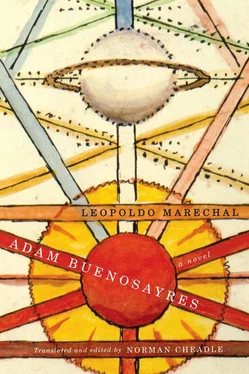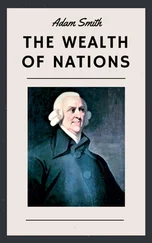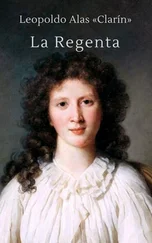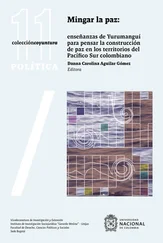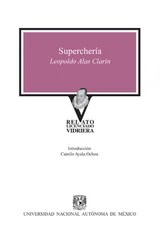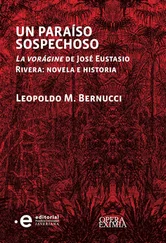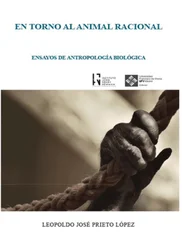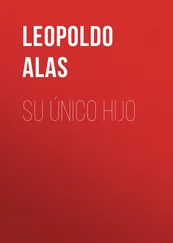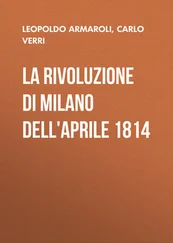6 “La Chacarita”: lyrics by Iván Diez (1897–1960). The tango is a lugubrious meditation on death written in lunfardo and inspired by the eponymous cemetery (see 628n2).
7 Paternal is a barrio bordering on both Chacarita and Villa Crespo. Villa Soldati is in the south end of the city.
8 lobisome (also, lobisón or lobizón ) < Portuguese, lobishome “wolf-man.” The werewolf legend passed from Brazilian to Argentine folklore. In Brazil, the seventh consecutive son of the same father and mother, from the age of thirteen, changes into a lobishome on Fridays during Lent from midnight to two in the morning. In the Argentine version, the seventh of consecutive sons in a family turns into a wolf-like creature that wanders the hills and attacks all humans. This legend was so prevalent in the 1900s that children were being abandoned or killed. To prevent this, a law was passed in the 1920s making the president of Argentina the legal godfather to the seventh son of all families. The state gives the boy a gold medal and a scholarship for his studies until his twenty-first birthday. The tradition continues to this day. On 7 June 2004, Argentine president Néstor Kichner attended the baptism of the seventh boy born to a family in the city of Sunchales, in the northern province of Santa Fe.
9 Perhaps a reference to Marechal’s poem “A un zaino muerto” [To a Dead Chestnut Horse] in Días como flechas : “Sabías deshacer el nudo del horizonte / y masticar el pasto bravío de las leguas” ( OC I, 100) [You used to untie the knot of the horizon / and chew up the wild grass of leagues].
10 Rabelaisian allusion. In Gargantua and Pantagruel (Book Two, chapter VII) appears a list of titles supposedly belonging to the Library of St. Victor. One title is Ars honeste fartandi in societate [The Art of Farting Decorously in Society]; another, Tartaretus de modo cacandi [Treatise (or better: Turdise) on How to Shit].
11 Gringo : — refers to any foreigner or immigrant, usually Italians, but others as well. Later, Del Solar calls Schultz “gringo”; his real-life model, Xul Solar, was born of an Italian mother and a German-speaking Latvian father.
12 “ Caballito criollo / del galope corto / y el aliento largo .” The first lines of the popular poem “Caballito criollo” by Belisario Roldán (1873–1922), later set to music by Floro Ugarte (1884–1975).
13 In the original, Adam “todo lo veía en imagen.” There may be an allusion to Eduardo González Lanuza’s short story collection Aquelarre (1928), which Lanuza characterized with the somewhat pleonastic subtitle: “cuentos imaginados en imagen” [stories imagined in images].
14 “En mi pobre rancho, / vidalitá, / no existe la calma, / desde que está ausente, / vidalitá / el dueño de mi alma.” These lines, along with the stanzas that follow, are Argentine folksongs. The chorus line Vidalitá comes from the folk genre vidalita , typical of the northwestern region of Argentina.
15 “Amalaya fuera perro, / mi palomita, / para no saber sentir, / ¡adiós, vidita! / El perro no siente agravios, / mi palomita, / todo se le va en dormir, / ¡adiós, vidita!”
16 “Una vieja estaba meando / (y adiós, que me voy) / debajo de una carreta / (¡cuál será su amor!) / y los bueyes dispararon / (y adiós, que me voy) / creyendo que era tormenta / (¡cuál será su amor!).”
17 “De arribita me he venido / (la pura verdad) / pisando sobre las flores / (vamos, vidita, bajo el nogal): / Como soy mocito tierno / (la pura verdad) / vengo rendido de amores / (vamos, vidita, bajo el nogal).” Marechal collected and/or invented many more folkloric ditties such as these for possible inclusion in his novel. See Marisa Martínez Pérsico (147–96).
18 The idea was propagated (invented?) by Leopoldo Lugones, who in El payador (51) spoke of an Andean Sea and even claimed to have found fossilized clam shells in Covunco, Neuquén (51n).
19 Florentino Ameghino (1854–1911) was an Argentine paleontologist and anthropologist whose book La antigüedad del hombre en el Plata (1880) sustained the thesis that humanity originated in the Argentine pampa. Bernini, the character based on Raúl Scalabrini Ortiz, will espouse his thesis shortly. His father, Pedro Scalabrini, was also a paleontologist who worked closely with Ameghino (Galasso 16–17).
20 Gaetano Rovereto [Cayetano Roveretto, in Argentina] (1870–1952): Italian geologist, paleontologist, and theoretician of evolution, whose investigations in Argentina resulted in his book Los estratos araucanos y sus fósiles (1914). Paul Wilhelm Ferdinand von Richthofen (1833–1905): influential German geologist. Hugo Obermaier (1877–1946): German paleontologist and anthropologist who worked in Spain, author of El hombre fósil (1916). Josef Bayer (1882–1931): Austrian anthropologist and archeologist who worked with Obermaier.
21 Even today, the avenida Corrientes is lined with bookstores of all kinds.
22 El Peludo was the nickname given to President Hipólito Yrigoyen (1852–1933), given his predilection to stay holed up in the Casa de Gobierno and avoid interviews with the press. His populist presidency in the 1920s marked a major shift in Argentine politics and the emergence of the hitherto unrepresented popular classes. That he was “the delight of the Muses” can be read in two senses. Barcia (380n) indicates that Yrigoyen was a favourite theme for the popular payadors. But the martinfierristas were also enthusiastic about him. In the lead-up to the 1928 presidential election, a group of them formed The Committee of Young Intellectuals for the Re-election of Hipólito Yrigoyen, with Borges as president and Marechal as vice-president. Macedonio Fernández, among other writers now canonical, participated as well (Abós, Macedonio 135–6).
23 Located in the city of La Plata, this natural science museum was cutting-edge at the time of its inauguration in 1889 and a source of national pride.
24 The War of Paraguay, or the War of the Triple Alliance (1864–70), pitted Paraguay against Brazil, Uruguay, and Argentina. This triple alliance was supported by British capital, which until the war had been economically shut out of isolationist Paraguay. The war literally decimated Paraguay’s population and drastically reduced its national territory.
25 The daily existed from 1928 until 1967. At the invitation of its first director, Alberto Gerchunoff (see 639n22), Marechal worked as a journalist there for some months. It was there that Roberto Arlt became known for his column “Aguafuertes porteñas” (Andrés 29).
26 The literary conceit of the talking Glyptodon was invented by Enrique González Tuñón (1901–1943) in his vignette “Mi amigo de la prehistoria” [My Friend from Prehistory] in his El alma de las cosas inanimadas (1927).
27 In Spanish, a verdad de Perogrullo or perogrullada is a truth so trite or obvious as to be not worth saying. Perogrullo’s uncertain historical existence dates back to thirteenth-century Spain.
28 Navascués ( AB 278n) notes that the notion linking aboriginal America with Atlantis goes back to colonial times, at least as far as the Dominican friar Gregorio García’s treatise Origen de los indios del Nuevo Mundo (1607).
29 Winca means “Christian, white man” in the Araucano language spoken by the Ranquel Indians. The abuse of the gerund ( matando , “killing”) in the spoken Spanish of the aboriginals has been picked up from Lucio Mansilla’s Una excusión a los indios ranqueles (1870) [A Visit to the Ranquel Indians]. Marechal’s personal copy of this book is very well thumbed and full of underlined passages, an indication of how much his fictive excursion to Saavedra respectfully parodies Mansilla’s famous book, not only in this passage, as Barcia notes (387n), but throughout the chapter.
Читать дальше
